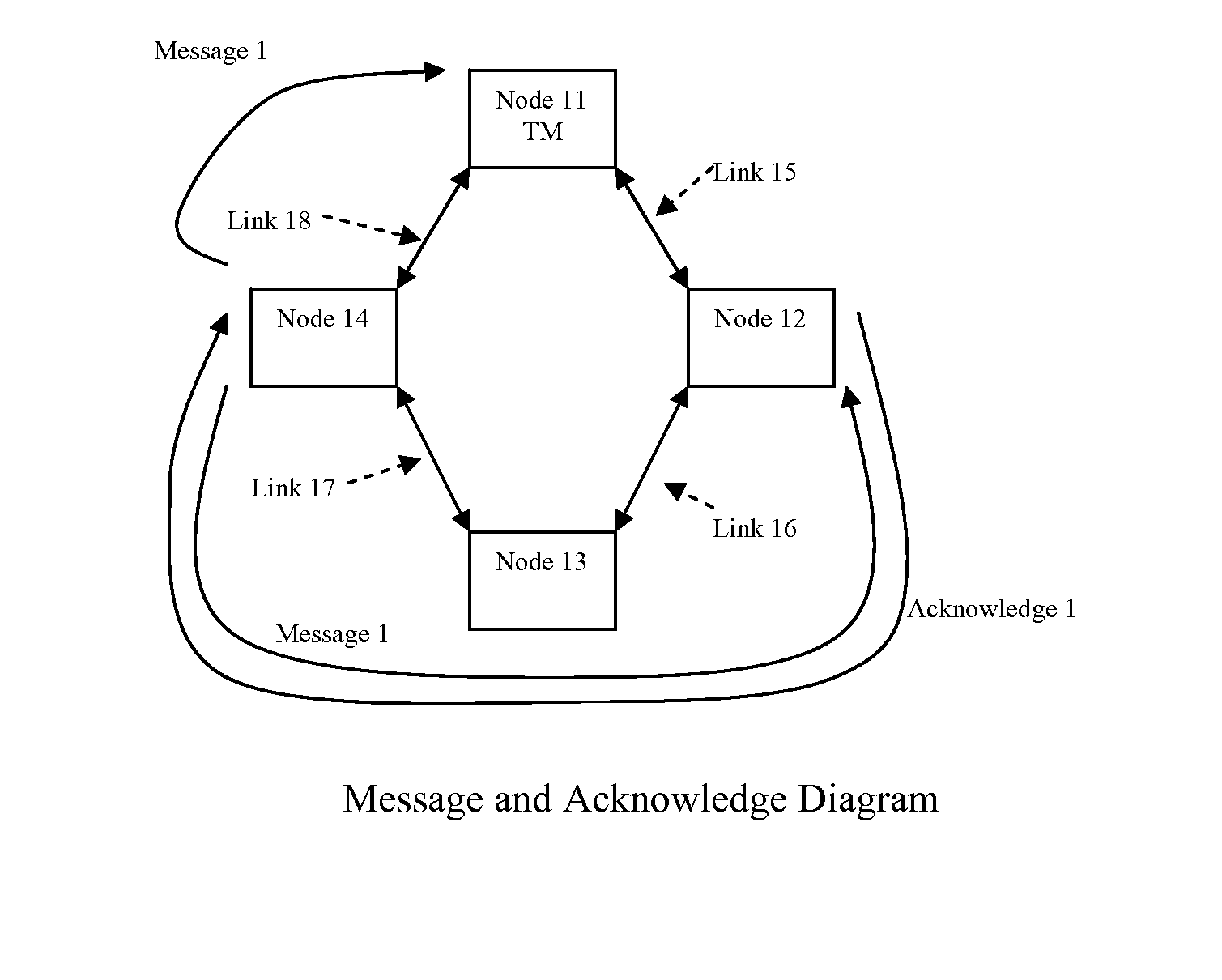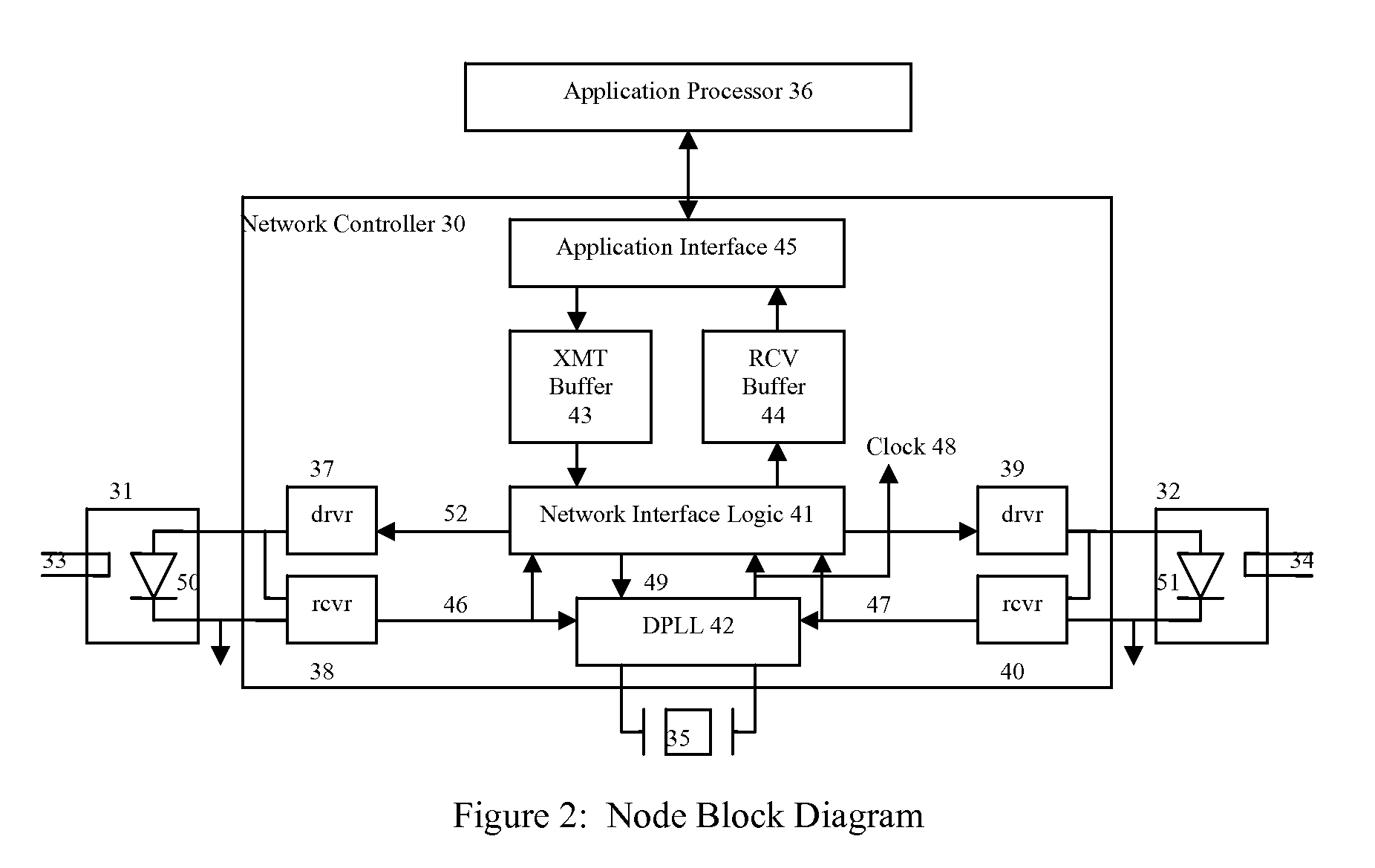Fault tolerant network utilizing bi-directional point-to-point communications links between nodes
a communication link and fault-tolerant technology, applied in the field of data communication system, can solve the problems of jitter on the local network clock, significant cost, and the effect of flexray protocol achievemen
- Summary
- Abstract
- Description
- Claims
- Application Information
AI Technical Summary
Benefits of technology
Problems solved by technology
Method used
Image
Examples
Embodiment Construction
)
[0053]Turning now to the drawings, FIG. 1A illustrates a group of nodes 11, 12, 13, and 14 connected in a ring topology by communication links 15, 16, 17, and 18. Each node has at least two ports illustrated by ports 19 and 20 on node 11 and ports 21 and 22 on node 12, which can communicate data in both directions. Node 11 in this example is defined as the timing master (TM), which repetitively sends a data frame around the ring in alternating directions. A first data frame travels from port 20 clockwise around the ring to port 19. After the complete data frame is received at port 19, the next data frame is sent from port 19 counter clockwise around the ring to port 20. Successive data frames continue alternating in direction, which allows all nodes to communicate with each other. The communication links preferably use plastic optical fiber (POF), but could use a wide variety of communication media including twisted pair wire or coaxial cable for instance.
[0054]FIG. 1B illustrates ...
PUM
 Login to View More
Login to View More Abstract
Description
Claims
Application Information
 Login to View More
Login to View More - R&D
- Intellectual Property
- Life Sciences
- Materials
- Tech Scout
- Unparalleled Data Quality
- Higher Quality Content
- 60% Fewer Hallucinations
Browse by: Latest US Patents, China's latest patents, Technical Efficacy Thesaurus, Application Domain, Technology Topic, Popular Technical Reports.
© 2025 PatSnap. All rights reserved.Legal|Privacy policy|Modern Slavery Act Transparency Statement|Sitemap|About US| Contact US: help@patsnap.com



